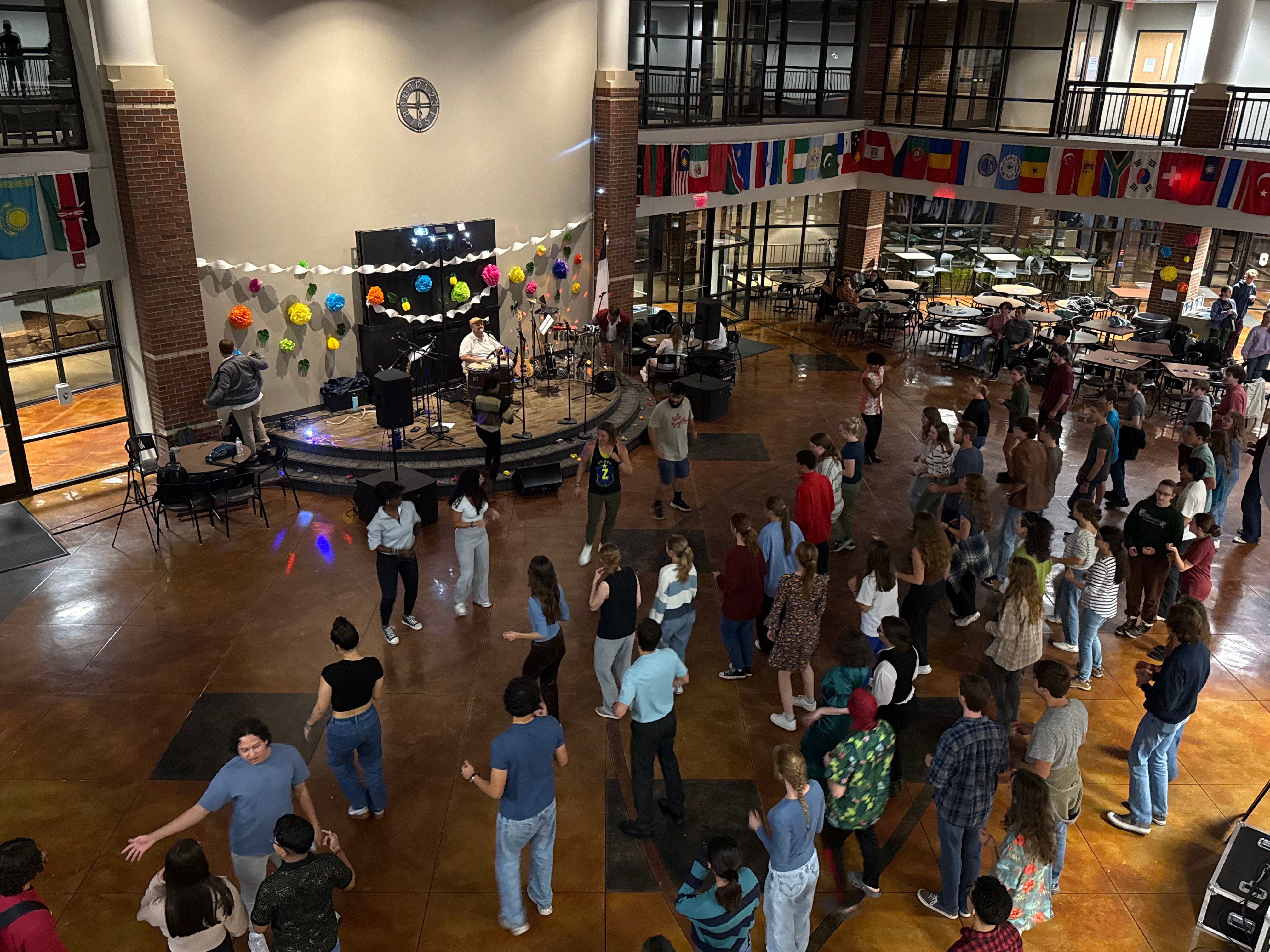![]()
Pick up a newspaper or open a browser window and you probably won’t consider what technology was necessary to get the words on the page. Every step in the publishing process involved integrated circuits. Millions of similar everyday actions are only possible with these tiny transistor arrays nestled into every electronic device we use.
This is the microscopic, computerized world John Brown University adjunct engineering professor Kim Cornett envisioned for her Integrated Circuitry class during the Fall 2016 semester. This new JBU class is built on previous electrical engineering concepts, consists of six weeks of design theory and finishes out with hands-on design projects by groups of engineering students. Cornett said she structured the class for real-world experience.
Normally, manufacturing circuitry designs requires specialized equipment maintained in extremely clean environments costing millions of dollars, so a student must learn only in theory.
However, organization Metal Oxide Semiconductor Implementation Service, run out of the University of Southern California, grants free fabrication and packaging to undergraduate students. MOSIS combines integrated circuit fabrication from several organizations to mitigate costs.
The JBU Engineering Department applied for and received one such grant for four 3mm by 3mm designs.
“We could’ve done the course without the grant, but MOSIS allows the designs to get out in the real world,” Cornett said. Cornett later reflected that MOSIS provides the perfect opportunity for student engineers to test their own designs.
Students Taliesin Harrison, Chase Harrod, Josiah Jackson, Benjamin Morris, Julia Theisen, Harrison Hosteter and recently-graduated Daniel Cho participated in the class to develop the four circuit designs to be printed. While highly technical, all four designs were completely original. After review and approval by Cornett, the groups set to work on their original designs.
Julia Theisen, senior engineering major, devised her own integrated circuitry project, a 16-bit add-and-subtract arithmetic logic unit with a seven-segment display. After the first few weeks of Integrated Circuits design theory, their first lab incorporating theory into their designs required learning an open-source program. “It went from zero to 100 really fast. The learning curve was super high,” Theisen said.
“It’s a totally new software to these students,” Cornett said. “A lot of the first part of the semester was just teaching the students how to understand what the software was telling them, simulating the designs and then debugging any errors the software found.”
Theisen, the only female engineering student in the class, considers it a great experience that may give her advantage in a field typically dominated by men.
“I took the class because I found it interesting and because I knew Professor Cornett previously. She has been a professional sponsor for the Society of Women Engineers. She has been a good female engineer role model in our department,” Theisen said.
Theisen relied heavily on Cornett’s expertise working at Texas Instruments to make sure her nano-scale computing device would function correctly given the space restrictions. “She was my sounding board when I didn’t have a partner, so that helped out a lot,” she said.
After the four groups completed their final designs and the class, Cornett submitted the designs for MOSIS fabrication. Cornett and the Integrated Circuits class have received sporadic updates about where their designs are in manufacturing. If the process goes smoothly, the circuits are due to arrive from fabrication and packaging just before graduation in May. “Making these circuits takes a long time – several weeks. I was hoping they would get back a little bit sooner,” Cornett said.
Cornett and the class plan to test them as soon as they arrive. “All the students made personal commitments to come back and test their circuits,” Cornett said. “They spent so much time on them that they’re just proud of their work and really excited to see it work in real life.”




